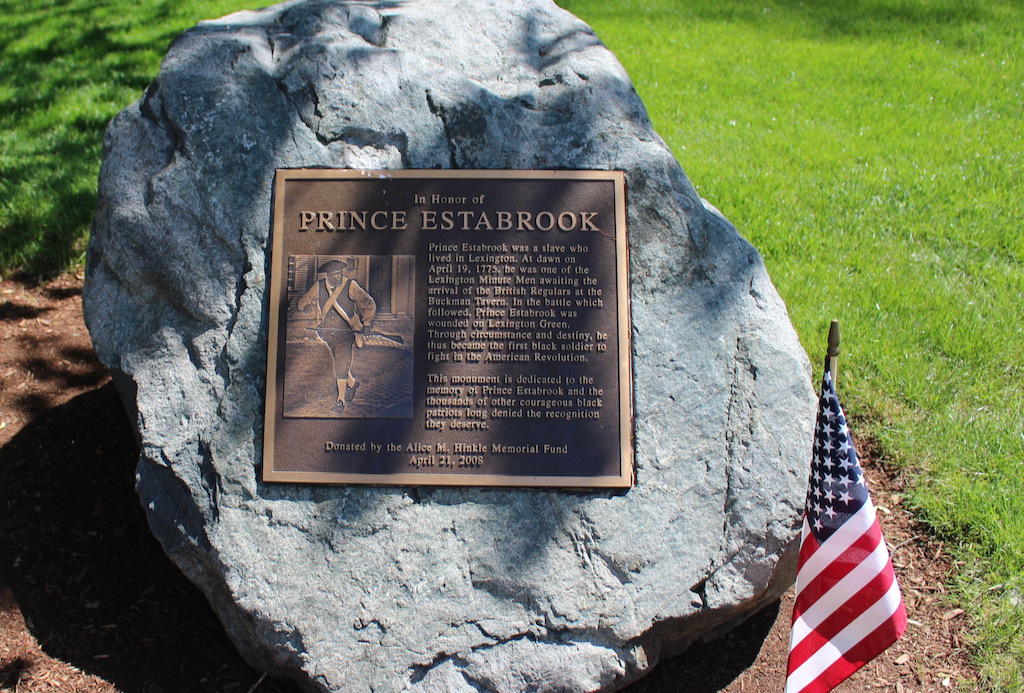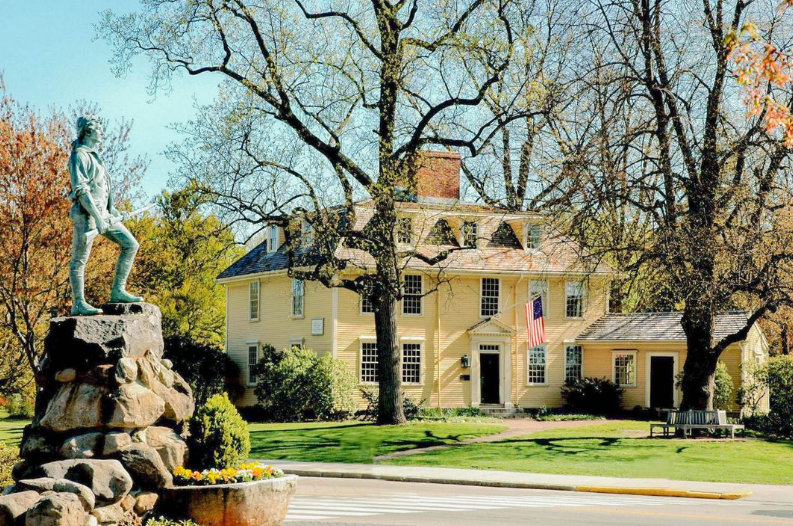Among the unsung heroes of the American Revolution is Prince Estabrook, whose journey from enslaved person to soldier encapsulates the struggle of enslaved individuals fighting for their own liberty during this pivotal moment in American history.

Born in 1741 in Lexington, Massachusetts, Prince Estabrook was enslaved by Benjamin Estabrook, a farmer and grist mill operator. While little is known about his specific duties, Prince likely spent his days performing farm labor and assisting with household tasks on Benjamin’s property.
At dawn on April 19, 1775, Estabrook stood among more than 80 men in Captain John Parker’s Lexington militia, awaiting the arrival of British troops on Lexington Green. His participation in the Battles of Lexington and Concord marks him as one of the earliest African Americans to fight in the Revolutionary War. While his heroic stand was the first of its kind, Prince Estabrook suffered a shot to his shoulder during the skirmish in Lexington, making him the first Black soldier injured in the American Revolution.
Throughout 1775, Americans of African origin were largely forbidden from enlisting in the military, relegated instead to support and labor roles. However, as the need for soldiers grew more pressing, General George Washington, commander of the Continental Army, reversed that decision in January 1776. In exchange for their service in the fight for American independence, many African Americans were promised their freedom following the war. However, some enslaved men served as substitutes for their enslavers, allowing those owners to remain at home. This arrangement not only provided a path to freedom for some but also underscored the complexities of their fight for independence. They fought for national liberation while hoping for new opportunities in the emerging nation, inspired by the ideals outlined in the Declaration of Independence. Ultimately, more than 5,000 African Americans joined the Continental Army.
Prince Estabrook fully recovered from the injuries he sustained during the battle and returned to service about two months later. On June 17 and 18, 1775, during the Battle of Bunker Hill, the men of the Lexington Company were tasked with guarding the headquarters of the newly formed Continental Army in Cambridge, Massachusetts. Prince Estabrook was among those who stood guard.
Upon returning home to Lexington, he was recognized as a free man due to a ruling by the Massachusetts Supreme Judicial Court, which declared that slavery was incompatible with the Massachusetts Constitution, effectively abolishing the institution that year in the state.
Estabrook continued to reside with the Estabrook family, eventually relocating to Ashby, Massachusetts, where he lived until his passing in 1830. In recognition of his legacy, a memorial dedicated to Prince Estabrook and the thousands of other courageous soldiers of color, long denied the recognition they deserve, was established near Buckman Tavern in Lexington in 2008.
Prince Estabrook’s story challenges us to rethink the narrative of the American Revolution, highlighting the vital contributions of African Americans in the fight for liberty and justice, as we continue to commemorate the 250th anniversary of American independence.





